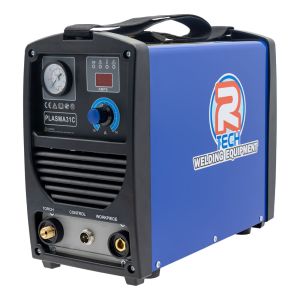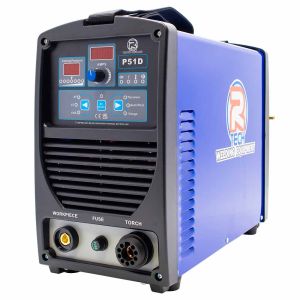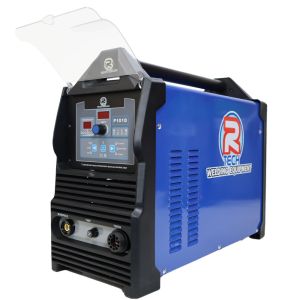Plasma Cutters
Plasma Cutters - Cut metal easily
Our Plasma cutters make cutting metal quickly very simple and come with a 5-year warranty. If you work with metal you should have one! The HF & pilot arc starting makes them easy to use. Our machines come with a torch, consumables, earth lead to get you cutting out of the box. Free UK delivery & 0% finance available.
Plasma cutting is a process that is used to cut steel and other metals of different thicknesses using a plasma torch. In this process compressed air is blown at high speed out of a nozzle; at the same time, an electrical arc is formed through that gas from the nozzle of the plasma cutter to the surface being cut, turning some of that gas to plasma. This is sufficiently hot to melt the metal being cut and moves sufficiently fast to blow molten metal away from the cut.
HOW IT WORKS?
The HF Contact type uses a high-frequency, high-voltage spark to ionise the air through the plasma cutters head and initiates an arc. This requires the plasma cutter to be in contact with the job material when starting, not so good if you have to penetrate through things like rust or painted surfaces.
The Pilot Arc type uses a two-cycle approach to producing plasma, avoiding the need for initial contact. First, a high-voltage, low current circuit is used to initialize a very small high-intensity spark within the torch body, thereby generating a small pocket of gas. This is referred to as the pilot arc. The pilot arc has a return electrical path built into the torch head. The pilot arc will maintain itself until it is brought into proximity of the workpiece where it ignites the main cutting arc. These arcs are extremely hot and are in the range of 15,000 degrees Celsius.
Plasma cutters are an effective means of cutting thin and thick materials alike. Hand-held plasma cutters can usually cut up to 2 inch (48 mm) thick steel plate, and stronger computer-controlled torches can pierce and cut steel up to 12 inches (300 mm) thick. Formerly, these plasma cutters could only work on conductive materials; however, new technologies allow the plasma ignition arc to be enclosed within the nozzle, thus allowing the cutter to be used for non-conductive workpieces such as glass and plastics. Since plasma cutters produce a very hot and very localized "cone" to cut with, they are extremely useful for cutting sheet metal in curved or angled shapes.
WHAT IS AN INVERTER CUTTER?
Inverter cutters rectify the mains supply to DC, which is fed into a high-frequency transistor inverter between 10kHz to about 200kHz. Higher switching frequencies give greater efficiencies in the transformer, allowing its size and weight to be reduced. Today's power modules are called IGBT's (Inter Gate Bipolar Transistors) and are generally found in better quality machines. IGBT based machines operate more efficiently and reliably.
CHOOSING THE RIGHT ONE?
The best way to decide which plasma cutter is going to be right for you is to consider the thickness of metal you intend to cut. We are always honest in what we claim our machines will cut. We quote the clean-cut depth as a benchmark for cutting thickness. This will mean that the maximum, or severance cut, will be 20 -25% higher than the clean-cut measurement. Severance cuts on most machines will normally require some finishing on the cut edge due to the cutter operating at the upper most limit of its operational envelope.


-


R-Tech P31C Plasma Cutter 240V (12MM Cutting Kit)
P30CNow £538.92 £449.10 Was £598.80 £499.00Want to easily cut steel up to 8mm quickly and easily on a 13amp 240v supply, then this is the machine for you. Easy operation, just plug in to mains, connect to air compressor and you are cutting, no more cuttings disc...12MMSTEELALUM. -


R-Tech P51D Digital Plasma Cutter (240V)
P51DNow £988.20 £823.50 Was £1,098.00 £915.00Cut through up to 24mm with ease using the P51D plasma cutter. No-HF Pilot arc starting, gouging function and CNC interface as standard . With easy setup and low cost consumables, there's never been a better time to add...24MMSTEELALUM. -


R-Tech P101D Digital Plasma Cutter 415v
P101DNow £1,888.92 £1,574.10 Was £2,098.80 £1,749.00Cut through up to 40mm with ease using the P101D plasma cutter. No-HF Pilot arc starting, gouging function and CNC interface as standard . With easy setup and low cost consumables, there's never been a better time to ad...40MMSTEELALUM.




